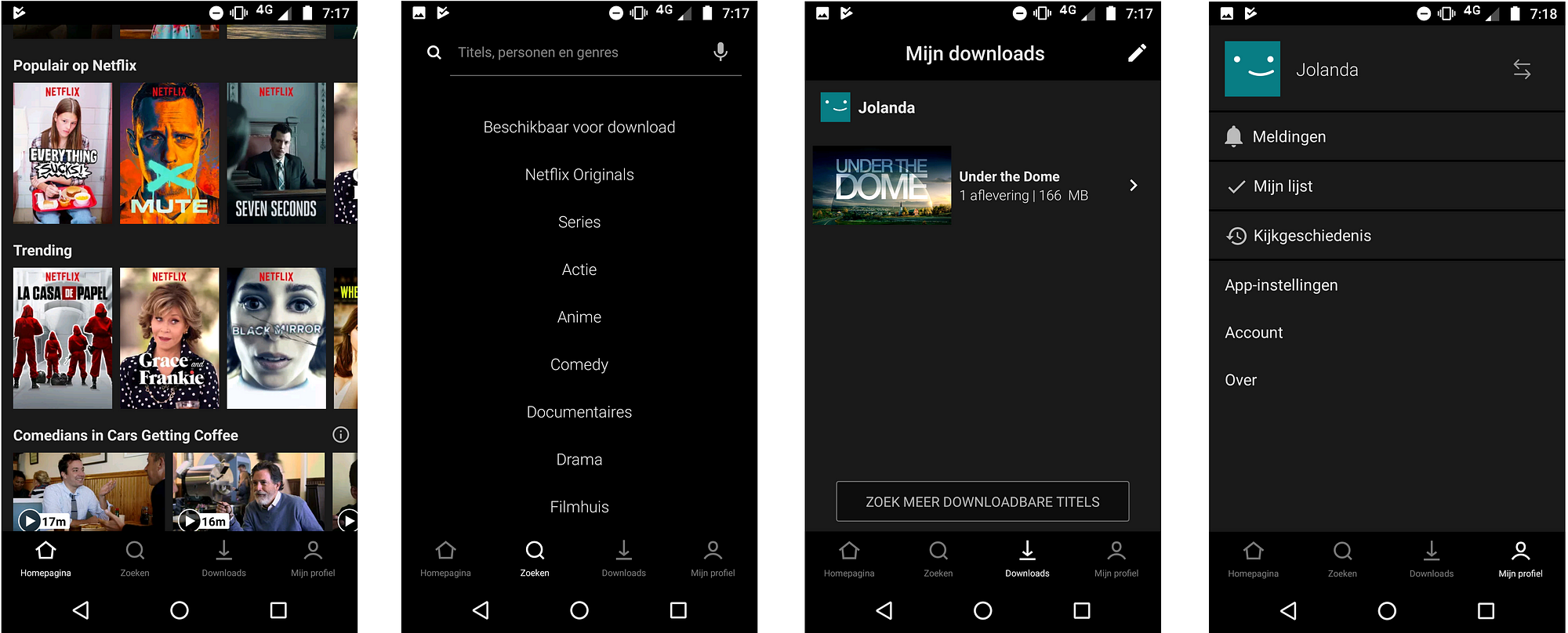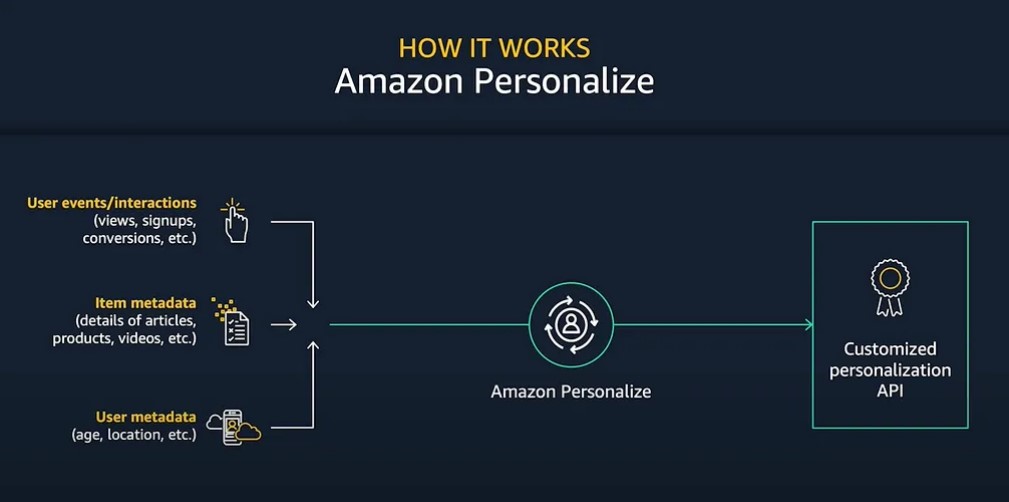Have you ever wondered what happens after a visitor lands on your website? What do they read, and for how long; will they return?
In this digital age, driving traffic to your website is only half the battle. The real challenge lies in keeping visitors engaged and coming back for more. This is where website retention comes into play, a crucial metric that can make or break your online success.
What is Website Retention?
Website retention refers to the ability of a site to keep users engaged and encourage repeat visits over time.
In a numeric sense, the Retention rate is the percentage of customers who come back to your app/website in order to perform a certain action such as making a purchase (Source).
For instance, if you have 30% overall retention in Week 3 it means that 30% of your users who started at the beginning of Week 1 are still around in Week 3.
Customer retention rate is an important KPI because it correlates with a high-product value, can help understand product-market fit and tell you where you need to focus your company’s resources. #dataanalytics #businessintelligence pic.twitter.com/nl43gkyRKh
— Knowi (@knowico) March 7, 2024
Retention rate is Key Performance Indicator (KPI) and is typically affected by metrics such as bounce rate, average session duration, and return visitor rate.
- The bounce rate measures the percentage of visitors who leave after viewing just one page and signifies a poor user experience. A lower bounce rate often indicates better retention.
- Average session duration tracks how long users spend on your site, with longer durations suggesting higher engagement.
- The return visitor rate shows the percentage of users who come back to your site, directly reflecting your retention success.
In Google Analytics’ retention overview reports, user retention shows the percentage of users who return each day in their first 42 days. It starts at 100% on the first day, when all users visit, and then drops as some users stop returning.
To calculate the website retention rate use the following formula:

Website Retention Rate = [(CE – CN) / S] x 100
In this formula, CE is the number of users at the end of the time period, and CN is the number of new users acquired during the time period. S represents the number of users at the beginning of the time period (Source).
Why Is Website Retention Important?
Every marketing meeting probably hears the word ‘growth’ at least 5 times. But is growth acquiring new users or retaining the existing ones? On the surface, virality or getting more visitors seems to be the indication of positive growth. However, if you consider growth in terms of maximizing weekly active users over time, it quickly becomes clear that focusing on retention has a much greater impact.
Harvard Business Review believes that retention is way more profitable because acquiring a new customer is anywhere from five to 25 times more expensive than retaining an existing one. Moreover, a study by Bain and Company shows that increasing customer retention rates by 5% increases profits by 25% to 95%.
Here are several other reasons why you should try to increase your retention rate:
1. Cost-effectiveness: As mentioned earlier, the major benefit of retaining existing users is that it is generally more cost-effective than acquiring new ones.
2. Higher conversion rates: Returning visitors are more likely to convert into customers or take desired actions. For e-commerce or subscription-based sites, higher retention directly correlates with increased revenue.
3. Increased lifetime value: Users who regularly return to your site are more likely to make multiple purchases or engage with your content over time, increasing their overall value to your business.
4. Improved SEO: Search engines often interpret high retention rates as a signal of quality content, potentially boosting your site’s search rankings.
5. Better user understanding: Repeat visitors provide more data about user preferences and behaviors, allowing you to refine your offerings and improve user experience.
6. Feedback opportunities: Regular users are more likely to provide valuable feedback, helping you continuously improve your site.
7. Community building: A stable base of returning users forms the foundation for building a strong, engaged community around your brand or content.
By focusing on retention, you’re not just keeping users on your site – you’re building a sustainable, growing online presence that can significantly impact your overall success. Ready to know how to increase your retention rate?
5 Proven Website Retention Tips From High-Traffic Websites
1. Create Engaging and Valuable Content
High-traffic websites have long understood that engaging, valuable content is the cornerstone of user retention. Let’s explore how to create content that keeps visitors coming back, with a special focus on new interactive ways.
Content quality is paramount. Your articles, videos, or podcasts should provide real value to your audience, addressing their needs, questions, or interests.
Learn From Hubspot
Take a cue from HubSpot, which has built a massive following through its comprehensive, educational content on marketing, sales, and customer service. Their blog posts, ebooks, and webinars are designed to solve real problems for their audience, establishing them as a go-to resource in their industry.
Trending Tip to Make Engaging Content
You might already know these tips, but you may not be aware that newly trending interactive elements like games or quizzes can significantly boost engagement and thus retention. The New Yorker Times, for instance, has seen great success with its daily crossword puzzles and other word games. These games have become a daily ritual for many users, driving regular visits to the site.
When implementing games, ensure they’re relevant to your niche. The key is to make the games both entertaining and valuable to your audience. Therefore, consider making easy customizable games on software like PuzzleMe that will help you deliver quality content without a hassle. By consistently delivering engaging, valuable content – including interactive elements like games – you’ll give your visitors compelling reasons to return time and again.
2. Optimize Page Load Speed
 In the fast-paced digital world, speed is everything. High-traffic websites like Google have long recognized that page load speed is a critical factor in user retention. Studies show that even a one-second delay in page load time can lead to a 7% reduction in conversions.
In the fast-paced digital world, speed is everything. High-traffic websites like Google have long recognized that page load speed is a critical factor in user retention. Studies show that even a one-second delay in page load time can lead to a 7% reduction in conversions.
Learn From Google
Google’s approach to speed is exemplary. They’ve made page load time a ranking factor in their search algorithm, emphasizing its importance not just for user experience but also for SEO. Google’s own research indicates that 53% of mobile site visits are abandoned if pages take longer than three seconds to load. This underscores the critical nature of speed optimization, especially in an increasingly mobile-first world.
Here are practical steps to improve your website’s load speed:
Image Optimization:
- Compress images without sacrificing quality
- Use modern formats like WebP for better compression
- Implement lazy loading to defer off-screen images
Minimize HTTP Requests:
- Combine CSS and JavaScript files
- Use CSS sprites to reduce image requests
- Remove unnecessary plugins and scripts
Leverage Browser Caching:
- Set appropriate expiry dates for cached resources
- Use a Content Delivery Network (CDN) to serve static content
Prioritize Above-the-Fold Content:
Structure your HTML to load critical, visible content first.
Minify CSS, JavaScript, and HTML:
- Remove unnecessary characters and whitespace from your code.
- If developing custom games, ensure the code is optimized. Minify JavaScript and use efficient algorithms to reduce processing load. Alternatively, you can use fully-optimized games made through PuzzleMe.
To measure your progress, use tools like Google PageSpeed Insights or GTmetrix. These provide detailed analysis and recommendations for improvement.
Remember, optimizing page load speed is an ongoing process. As you add new content and features to your site, regularly check and maintain your load times. By prioritizing speed, you’re not just improving user experience – you’re laying the groundwork for better retention, higher conversions, and improved search engine rankings.
3. Implement Personalized User Experiences
In the era of big data, high-traffic websites have mastered the art of personalization to keep users engaged and coming back. Personalization involves tailoring content, product recommendations, and user interfaces based on individual user preferences, behaviors, and characteristics. Let’s explore how to implement this powerful retention strategy effectively.
Learn From Amazon
Amazon stands out as a prime example of personalization done right. Their recommendation engine, which drives 35% of their revenue according to McKinsey, uses a sophisticated algorithm to analyze user browsing history, purchase patterns, and similar users’ behaviors to suggest products. This level of personalization not only enhances user experience but also significantly boosts retention and sales.
Here are key strategies for personalizing user experiences:
User Behavior Tracking:
Implement analytics tools to gather data on user interactions, including:
- Pages visited
- Time spent on each page
- Click patterns
- Search queries
- Purchase history
Dynamic Content Delivery:
- Use collected data to serve personalized content:
- Recommend articles based on reading history
- Suggest products similar to previous purchases
- Display targeted advertisements
Personalized Email Marketing:
- Leverage user data for tailored email campaigns:
- Send product recommendations based on browsing history
- Offer personalized discounts on items left in shopping carts
- Provide content updates on topics of interest
When implementing personalization, it’s crucial to balance effectiveness with user privacy concerns. Be transparent about data collection and usage, and provide clear opt-out options for users who prefer not to have their data used for personalization.
As people’s choices change, personalization becomes dynamic. Continuously analyzing user data and refining your personalization strategies will improve effectiveness. By creating a more relevant and engaging experience for each user, you’ll significantly boost retention rates and overall user satisfaction.
4.Enhance Site Navigation and User Interface
Intuitive navigation and a user-friendly interface are crucial components of website retention. A well-designed interface can mean the difference between a visitor staying engaged or quickly bouncing to a competitor’s site. User-friendly interfaces prioritize simplicity and efficiency.
Learn From Netflix
High-traffic websites like Netflix have perfected the art of guiding users effortlessly through vast amounts of content, ensuring a smooth and enjoyable experience that keeps users coming back.
Netflix’s user interface is a masterclass in simplicity and effectiveness. Despite hosting thousands of titles, users can easily find what they’re looking for or discover new content that matches their interests. The key is a clean, responsive design coupled with personalized recommendations and clear categorization.

Fun Fact: While there is no doubt Netflix’s user interface is interactive, they made their advertisements interactive too. With a simple crossword, Netflix elevated the advertisement experience according to the user’s tendency to enjoy play and competition. Check it out: The Chair – The New Yorker – Advertiser Pages.
Here are best practices for improving navigation and user interface:
Clear Menu Structure:
- Implement a logical, hierarchical menu system
- Use descriptive, concise labels for menu items
- Limit main menu items to 7 or fewer to avoid overwhelming users
Search Functionality:
- Provide a prominent, easy-to-use search bar
- Implement autocomplete and predictive search features
- Offer advanced search options for complex sites
Breadcrumb Navigation:
- Include breadcrumbs to help users understand their location within your site
- Make breadcrumbs clickable for easy navigation
Quick-Access Features:
- Implement a “Back to Top” button for long pages
- Use sticky headers for constant access to main navigation
Remember, the goal is to make navigation so intuitive that users don’t have to think about it. Regularly conduct user testing to identify pain points in your navigation and UI. Tools like heatmaps and user recordings can provide valuable insights into how users interact with your site.
By enhancing your site’s navigation and user interface, you’ll reduce friction, increase user satisfaction, and ultimately improve retention rates. Users who can easily find what they’re looking for and enjoy the process are far more likely to return to your site in the future.
5. Build a Strong Community and Encourage User Interaction

Creating a strong sense of community and fostering user interaction is a powerful strategy for improving website retention. By fostering a vibrant community, websites can transform from mere information sources into dynamic, interactive spaces.
Learn From Reddit
High-traffic websites like Reddit have built their success on this very principle, turning their platform into a thriving ecosystem of user-generated content and discussions.
Reddit’s community-driven model is a prime example of how user interaction can drive engagement and retention. Before the multifold expansion of Reddit, it was considered a space only for the nerds. However, in 2018, it went through a major site redesign that helped make the platform more user friendly and appealing to a wider audience. Read case study.
The platform’s structure of subreddits allows users to find and participate in communities that align with their interests, while features like upvoting and commenting encourage active participation.
Here are key strategies for building community and encouraging user interaction:
Implement Robust Comment Systems:
- Allow users to comment on content
- Implement threaded discussions for easier conversation following
- Include features like upvoting/downvoting to highlight quality contributions
Create User Forums:
- Develop dedicated spaces for user discussions
- Organize forums by topics or interest areas
- Encourage user-generated content and questions
Implement Gamification Elements:
- Create point systems or badges for user contributions
- Develop leaderboards to recognize active community members
- Offer rewards for reaching certain milestones
- Have a consistent game running on the website (Example: The Atlantic)
Leverage Social Media Integration:
- Allow easy sharing of content to social media platforms
- Implement social login options for easier account creation
- Display social proof (e.g., share counts) to encourage further interaction
Remember, building a community takes time and consistent effort. It’s crucial to nurture your community by being present, responsive, and genuinely interested in what your users have to say.
By fostering a strong sense of community and encouraging user interaction, you create a compelling reason for users to return to your site regularly. They’re not just coming back for your content, but for the connections, discussions, and sense of belonging they’ve developed within your community. This emotional investment is a powerful driver of long-term retention and can turn casual visitors into loyal advocates for your platform.
Take the First Step
Each of these strategies plays a vital role in keeping users engaged and coming back to your site. However, implementing them doesn’t have to be a daunting task. You can start small and gradually improve your site’s retention rates.
One particularly effective way to boost engagement is by incorporating interactive elements like games into your website. A relatively small addition which has a significant impact.
Creating custom games for your website without any coding knowledge is rather simple. Which is why it is the ideal first step in your website retention journey. With PuzzleMe you can create customizable and fully optimized games which smoothly embed in your website.
Use PuzzelMe, and quickly add an interactive layer to your content strategy, increasing time on your site and encouraging repeat visits. So don’t further wait for new visits, rather make every visit worth.
Take your first step today!
- How to Start Your Own Jigsaw Puzzle Blog - April 16, 2025
- How to Host a Jigsaw Puzzle Competition Online - March 20, 2025
- Add Games to Squarespace: All You Need to Know - January 9, 2025
